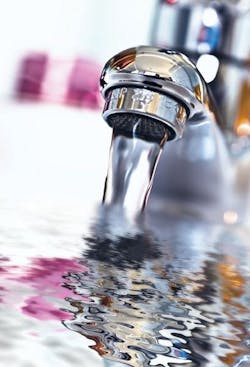About the author: Matt Sigler is technical director for Plumbing Manufacturers Intl. Sigler can be reached at [email protected] or 847.481.5500.
As policymakers search for consensus on issues relating to water and the environment, Plumbing Manufacturers Intl. (PMI) continues to advocate for water efficiency, a restored national water infrastructure and safe plumbing benefitting public health.
While federal policymakers wrangle over budgets and priorities, policymakers in states such as California continue to push for ways to more aggressively conserve and reuse water.
WaterSense Program in Jeopardy
WaterSense is one of several programs in line to be eliminated under the U.S. Environmental Protection Agency’s (EPA) proposed budget for fiscal year 2018. PMI recently urged EPA to preserve and maintain the WaterSense program, which has provided water- and cost-saving benefits over the past 10 years. The voluntary partnership program, sponsored by EPA, has had widespread support from the plumbing manufacturing industry during that time.
WaterSense products have saved an estimated 1.5 trillion gal of water since the program’s inception in 2006. The program costs EPA about $3 million per year to administer, and has delivered more than $33 billion to consumers in water and energy bill savings, according to the WaterSense website. WaterSense products use 20% less water than plumbing products meeting federal standards.
PMI has reached out to more than 50 key congressional offices to discuss the value of maintaining the WaterSense program, and will continue those efforts. In addition, it is working closely with other partners, including the Alliance for Water Efficiency (AWE), American Water Works Assn. (AWWA), High-Performance Buildings Coalition and National Association of Home Builders to save the program.
To further emphasize the importance of water efficiency, PMI and AWE released the results of a research study in April estimating that 170 billion gal of water can be saved annually through water-efficient toilets in five states facing water scarcity. The infographic on page 18 provides examples of how this saved water can be used. For example, it is enough water to take 10 billion showers—more than one for each person on the planet.
Water Reuse Benefits & Risks
Efforts to conserve potable water through reuse have been gaining momentum, especially in states like California that have been hit hard by drought. PMI continues to monitor and comment upon California draft regulations such as AB 2282, which would require new residential and commercial developments in the state to include recycled water systems beginning in 2018 if certain conditions are met. These plans include the use of non-potable water for flushing toilets and urinals in new construction.
PMI, along with several state legislators and other stakeholders, have requested that the regulations be delayed until scientific studies determine if recycled water use in this manner poses any risks to public health and safety, as well as if there are plumbing product performance issues when these products are used with treated wastewater.
One such study that may be used as guidance is a Virginia Tech study funded through AWWA and the National Science Foundation, under the direction of Dr. Amy Pruden and Dr. Marc Edwards. This research explores the relative abundance and diversity of antibiotic-resistant genes and pathogens in reclaimed versus potable water distribution systems. A Virginia Tech research team recently released the results of a study concluding that interrupted corrosion control caused the Flint, Mich., lead contamination crisis.
Infographic courtesy of Alliance for Water Efficiency and Plumbing Manufacturers Intl.
Restoring National Water Infrastructure
PMI traditionally has advocated for water-efficient plumbing products, particularly those certified by the WaterSense program. However, the lead contamination in Flint and other U.S. communities—coupled with concerns about waterborne pathogens such as Legionella, water main breaks and leaks, and drought and its impact on water infrastructure—led PMI to begin an advocacy effort focused on water infrastructure issues.
In the summer of 2016, PMI introduced its water infrastructure advocacy with a position paper and infographic. The organization continues to educate policymakers about the importance of restoring national water infrastructure.
Congressional leaders from both parties have expressed interest in developing job- creating legislation that would restore American infrastructure. PMI will urge Congress to address water infrastructure concerns through this legislation.
In addition, a PMI study currently in progress under the direction of Dr. Paul Sturman of Montana State University is testing the hypothesis that low flow rates yield a greater proliferation of opportunistic waterborne pathogens, such as Legionella, in potable water and create unsafe conditions. Edwards, of Virginia Tech, has published research showing that waterborne pathogens like Legionella are more likely to grow when water lies stagnant in pipes leading to the tap.
This research is especially important, as lower flow rates and alternative water systems that keep water in pipes longer are being considered to address water shortages.
Photo copyright: pixinoo/123rf stock photo
